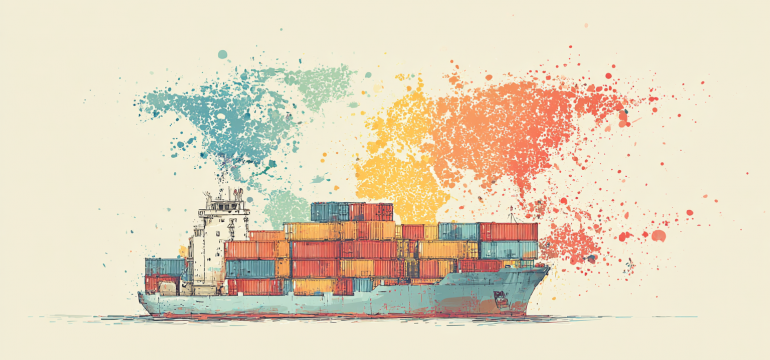India’s Make in India and Atmanirbhar Bharat vision rests on creating globally competitive industries that can scale, innovate, and export with confidence. Global trade, as we see today, is no longer based only on operational efficiency of industries. Global supply chains are increasingly fragmented, unfair trade practices are rampant, and market access is shaped as much by policy tools as by competitiveness. Every country is racing towards making its own industries competitive through policy regime – be it tariffs, subsidies, incentives or non-tariff barriers.
India, being a large market for consumer goods as well as industrial raw material and intermediates, is under constant threat from flood of unfairly priced imports. Several industries including steel, solar equipments and chemicals have been facing immense challenge from aggressive dumping from certain economies, leading to price distortions and hurting both large industries and MSMEs. Left unchecked, such practices make domestic industries uncompetitive, gradually forcing several small manufacturers to close down, and impacting livelihoods. Trade remedial measures under the WTO mechanism namely anti-dumping duties, countervailing duties, and safeguards are a policy tool that can be used effectively to restore fair competition and strengthen manufacturing ecosystem. Trade remedies not only protect domestic industries from distortions caused by predatory pricing or subsidies but also work within the rules-based system under the WTO framework.
Fixing the Weak Links
India already has a trade remedy framework, but its effectiveness is often impacted by procedural and policy challenges. Investigations stretch for years; interim relief is rarely granted; and MSMEs often struggle to navigate the complex system as they lack the legal and financial muscle.
FICCI recently organised a National Conference on Trade Remedies bringing together government, industry and legal experts for a candid dialogue. The deliberations were clear: India needs a framework that is timely, transparent, inclusive, and credible. Discussants at the conference emphasised faster investigations, stronger provisional measures, MSME-friendly processes, and better enforcement through data integration and digital monitoring. The insights that emerged through these deliberations underscore the need to view trade remedies not as an isolated instrument, but as part of a broader strategy for building a competitive, resilient, and quality-driven industrial ecosystem. Trade remedies must be aligned with quality regulations and import policies, creating a cohesive defence against unfair trade while enhancing India’s global credibility.
Specifically, India needs to strengthen its trade remedial mechanism through following measures:
First, timely provisional relief measures are important. The U.S. and the EU routinely impose provisional duties within months. India must do the same. A checklist-based initiation process, backed by digital filings, AI-driven data analysis, and stricter timelines, can ensure timely relief.
Second, revisiting existing laws, rules and procedures for enhanced efficacy and efficiency is critical. Injury assessments must reflect real-world business conditions, not rigid formulas. Revisiting the Lesser Duty Rule in line with the current realities will be crucial. Measures must balance producer protection with consumer interests, but they should not leave Indian firms exposed to subsidised global competition.
Third, expanding the institutional capacity is the key. Enlarging DGTR teams, active use of technology and creation of a Centre of Excellence for investigations within DGTR may be considered.
Fourth, capacity building of MSMEs must be enhanced. To ensure that MSMEs get ready access to trade remedial measures and also utilise it effectively, there is a need for having simplified formats, regional advisory desks, and digital platforms.
Fifth, pre-emptive defence needs to be strengthened. Trade remedies cannot work in isolation. They need to be complemented by regulatory measures, including quantitative restrictions, import quotas and use of minimum import price, wherever necessary. A balanced approach between liberalisation and regulatory measures is important. Additionally, export regulations and product standards of countries with excess capacities like China should be regularly studied.
Sixth, ensuring that India does not become a dumping ground for sub-standard goods is as important as defending against predatory pricing. Leveraging Quality Control Orders (QCOs) as an instrument for not only ensuring compliance and consumer safety, but also for enhancing the competitiveness of Indian industry in global markets is becoming a necessity.
Seventh, equally important is enforcement. Anti-dumping or safeguard duties are rendered ineffective if circumvention at ports goes unchecked. Building real-time monitoring systems that integrate customs data, AI-driven analytics, and cross-agency coordination would make enforcement more effective and future-ready.
If India aspires to be the world’s trusted manufacturing hub, it must defend its turf with conviction. Trade remedies are far more than reactive legal tools; they are strategic levers for industrial competitiveness and national economic security.
In a world where the WTO is weakened and protectionism is rising, India must wield its trade remedy framework not timidly, but strategically. By strengthening its trade remedy framework, India can ensure that its industries compete on equal footing. Done right, it will not only shield industries from unfair practices but also transform India’s manufacturing ecosystem into one of quality, resilience, and global credibility.






Leave a Reply